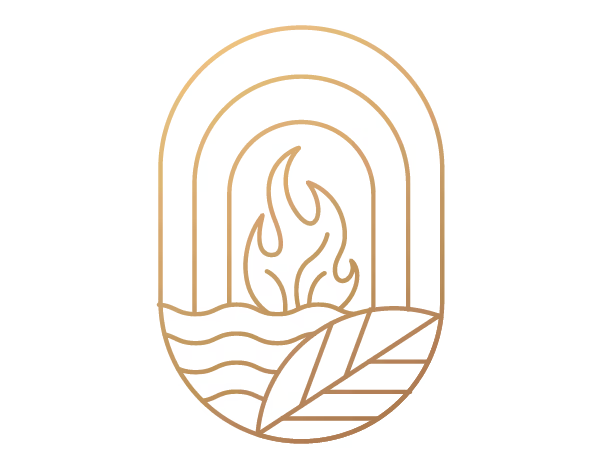Modern extraction facilities face unprecedented margin pressures—so every wasted kilowatt-hour, breakdown, or slow batch directly impacts profitability. Tracking the right maintenance KPIs and energy metrics is essential for driving improvement, staying audit-ready, and supporting sustainability goals. The challenge: most labs collect loads of data, but few focus on the short list of KPIs that drive meaningful action.
Below, we'll map out a 90-day dashboard that centers your team's focus on the metrics that matter most for an extraction lab—and lay out the tools and best practices to achieve world-class reliability and energy performance.
Why Now? Margins, Compliance, and the New CMMS Imperative
The cost of downtime (lost output, rework, overtime) and the weight of energy bills demand a rethink in daily lab management. Regulatory audits increasingly expect evidence of preventive maintenance (PM), equipment calibration, and sustainability reporting. In this climate, standing up a reliable KPI dashboard isn't just nice—it's survival.
Urth & Fyre supports operators with the right equipment, instrumentation, and a practical KPI focus. Our partners commission, calibrate, and maintain the data streams needed for both daily improvement and regulatory readiness.
The 90-Day KPI Starter List for Extraction Labs
Below is a short, high-impact list of maintenance and energy KPIs (Key Performance Indicators) for extraction labs and similar regulated environments. Each is actionable, benchmarks-based, and connects directly to daily operations:
1. Energy Intensity (kWh per Liter or kg)
Definition: Total energy (kWh) consumed per unit of solvent recovered or material dried/processed.
- Benchmarks: For drying/evaporation operations, energy intensity can range from 5.7 to 21.3 kWh/kg, depending on technology and product source. Continuous monitoring enables comparison across shifts, seasons, or equipment.
- How to measure: Sub-metering at the circuit or equipment level; most straightforward for big draws like chillers and heating circulators.
- What to do with the data: Use trendlines to spot inefficiencies in specific unit ops or anomalies indicating equipment degradation (e.g., fouled heat exchangers).
2. Chiller & Heater Delta-T Stability
Definition: The difference between the setpoint and return temperature for key heating/chilling circuits (like jacketed reactors or wiped-film evaporators).
- Why it matters: Large deviations drive excess energy use and may signal fouling, improper flow, or undersized equipment.
- KPI Target: Delta-T within ±2°C of spec under steady-state; investigate trends exceeding this range.
- Pro Tip: Install digital sensors and set automated alerts through your Building Management System (BMS) or PLC.
3. Vacuum System Leak-Rate Trends
Definition: Rate of pressure rise in a sealed vacuum system over time, measured during leak-down tests.
- Industry practice: Perform scheduled leak tests—keep detailed logs (date, equipment, severity). Acceptance criteria typically require leak rates below a set threshold (consult equipment spec or sector standard, e.g., <10⁻⁵ mbar L/s for high-vacuum lines source).
- What to track: Rising leak-rate trends flag gaskets or fittings needing attention before production downtime or product loss.
4. Preventive Maintenance Compliance (PM %)
Definition: Ratio of planned/scheduled PM tasks completed on time over a period.
- Benchmark: Aim for >90% PM compliance. Top plants strive for 95%+ to reduce unplanned failures (source).
- Input method: Ideally integrated through a Computerized Maintenance Management System (CMMS); even a robust spreadsheet can start the habit.
- Action: Review overdue PM tasks weekly. Updating Schedules and SOPs should follow root-cause reviews after failures.
5. OEE (Overall Equipment Effectiveness)
Definition: Composite metric combining Availability, Performance, and Quality [%].
- Benchmark: 85%+ is considered world-class in manufacturing/lab environments (source).
- Loss Tree: Track top causes of OEE loss—idle/waiting time, performance drops, quality events, setup/adjustment loss. Daily or per-shift reporting uncovers focus areas.
Turning Trends into Action (and Audit-Readiness)
KPIs become valuable only when linked directly to SOP changes, maintenance updates, and operator coaching:
- Sudden energy spikes? Schedule a heat exchanger clean and review operator logs for process drift.
- Delta-T out of range? Investigate process/flow or recalibrate the heating circulator.
- PM compliance slipping? Use root-cause analysis to rationalize schedules or reassign task ownership.
- Increased vacuum leaks? Replace suspect gaskets before a shutdown event.
- OEE trend declining? Review downtime logs for equipment bottlenecks and update troubleshooting guides.
Tie KPI rollups and reports to your annual compliance or sustainability audits—documenting both the value of your continuous improvement process for regulators and keeping your facility audit-ready.
Instrumentation: Data Sources and Tools
Where should labs start when adding instrumentation to enable these KPIs?
- Energy meters: Install circuit-level smart meters or IoT monitors on high-load equipment (heaters, chillers, vacuum pumps). Many utilities offer rebates.
- Temperature and pressure sensors: Use digital (networked) models for easy logging and setpoint tracking; many process controllers (and modern chillers/heaters) output data to PLC or local server.
- Vacuum sensors: Modern sensors log pressure decay for leak rate analysis; integrate with LIMS or data historian.
- CMMS (Maintenance Management): Cloud-based tools can cost a few hundred to a few thousand dollars/month but save multiples in avoided breakdown and compliance penalties. ROI is typically achieved in 12–24 months (source).
Urth & Fyre helps instrument your process, recommend right-sized equipment, and build a data-driven PM cadence with trusted commissioning and calibration partners.
Recommended Gear: Julabo SL-12 300°C 12L Heating Circulators
These high-performance circulators deliver pinpoint temperature control with networked digital logging to support chiller/heater Delta-T and energy efficiency tracking—one foundation of a sustainable KPI dashboard.
Implementation Framework: From Baseline to World-Class
- Assess: Map your critical process lines (extraction, solvent recovery, chilling, drying) and current data logging capabilities.
- Instrument: Upgrade select equipment with smart meters and sensors. Start with highest energy users and critical points for product quality and compliance.
- Baseline: Collect and review 2–3 weeks of data to set realistic initial KPI benchmarks.
- Visualize: Build a digital dashboard (use off-the-shelf CMMS, BMS, or Excel/Google Sheets). Show trends, not just single data points.
- Act: Conduct weekly reviews; prioritize PM tasks, root-cause investigations, and SOP updates based on trendlines.
- Standardize: After 60–90 days, update SOPs with new preventive or corrective measures. Certify team on new routines; document for compliance.
- Expand: Layer in additional KPIs as maturity grows—include water/gas intensity, per-batch costs, or ESG targets.
Sustainability & Reporting: Map KPIs to Governance
Energy and maintenance metrics not only cut costs—they are increasingly expected as part of:
- ISO 9001/14001 and GMP-adjacent certifications
- Regulatory (state/federal/international) audits
- Stakeholder sustainability and ESG disclosures
Labs that can show improvement in KPIs like kWh per batch, reduced leak rates, and high PM completion routinely outperform in both audits and marketplace reputation.
Proven Results: Payback and Performance
- Metering retrofits typically cost less than $10,000 per critical unit and show ROI in 12–18 months through utilities savings and fewer emergency repairs (source).
- CMMS adoption streamlines PM compliance, reduces breakdowns, and enables precise OEE tracking—key for aggressive operational improvement goals.
- Operators using actionable dashboards see 30%+ reductions in unplanned downtime and cut energy costs 10–20% within the first year.
Ready to Get Started?
Focusing on a short, actionable list of KPIs—like energy per unit, Delta-T, leak trend, PM compliance, and OEE—transforms lab performance, audit readiness, and sustainability compliance. Urth & Fyre can help instrument your process, commission the best-fit equipment, and drive a continuous improvement culture.
Ready to explore gear, implementation consulting, or audit prep? Visit Urth & Fyre to view equipment listings and connect with our experts.
Explore more lab and production gear at Urth & Fyre equipment listings.



